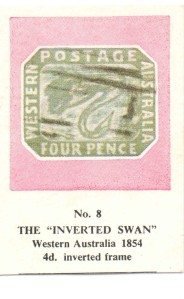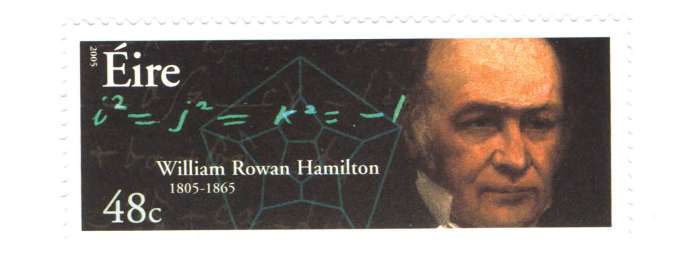
In 1959, the famous tea merchant, Twining’s of London, printed a series of 30 small cards measuring 1½ inches by 2¾ inches featuring illustrations of some of the world’s rarest stamps. Cigarette cards, showing actresses, sportsmen and other well-known figures, first appeared here in the late nineteenth century, issued by firms like Wills and John Player & Sons. They were used both as a form of advertising and as a means of strengthening the cigarette packet. The idea proved popular and all kinds of subjects featured on the cards over the following decades.
After the Second World War and the rationing of tea that was continued in its aftermath, the big British tea companies introduced tea cards as a way of marketing and re-introducing tea to the public in the early 1950s. Their market, of course, extended to Ireland where drinking tea was, until very recent years, much more popular than coffee. Considerable care was taken in the design and printing of the cards which were produced to a very high standard. The combination of colour and interesting snippets of information was a winning formula and the public collected cards to such an extent that the tea companies had to take on extra staff to deal with queries from those who wanted to buy missing cards to complete their collections!
Twining’s was set up in the early eighteenth century and its premises on London’s Strand is not far from the headquarters of the famous stamp dealer, Stanley Gibbons, which is also located on the Strand. Perhaps there was some co-operation between the two businesses for these tea cards encouraged stamp collecting. Instructions on the back of the cards read:
“Collect all 30 cards of the set. Cut off the bottom portions and return to above address with stamped addressed envelope for a free packet of selected foreign stamps.”
The series was devised by leading English stamp experts of the time, the Williams brothers, Norman and Maurice, whose knowledge of philately, especially its quirkier aspects, was immense. This particular series highlights some of the bizarre stories behind early stamp issues. Take a look at card No. 7, for instance. It shows Charles Connell, postmaster of New Brunswick in Canada, who decided to put his own portrait instead of Queen Victoria’s, on a 5 cent stamp in 1860. Such was the outrage generated that he had to resign and almost all of the stamps were destroyed. The “Double Geneva” of 1843 is an interesting stamp because it was printed in two parts, half could be used for local Geneva post at 5 centimes or the whole, at 10 centimes, could be used for letters between Swiss cantons.
Finally, there is card No. 8 which has an Irish connection even though it is an 1854 stamp of Western Australia. The stamp shows a swan within a frame. During printing the frame was inverted and a few stamps were issued before the mistake was discovered. Known as the “inverted swan”, one of the very few known is in the National Museum’s collection in Dublin. It was discovered by a school boy in The High School Dublin and ended up being bought by the Duke of Leinster who left his wonderful stamp collection to the museum.
Curator


 The Travelling Post Office or TPO, as it was known within the Post Office, was a vital part of postal infrastructure in Ireland from 1855 until the last ones were taken out of service in 1994. Clerks would sort letters en route so that they would be ready, close to delivery order, by the time the train arrived at its destination. Bags of mail, moreover, would be taken on and offloaded by means of a special net and pole apparatus at points on the journey without the train having to stop. The system was remarkably efficient and the men who worked on the TPOs were experts in their knowledge of the postal system and Irish geography.
The Travelling Post Office or TPO, as it was known within the Post Office, was a vital part of postal infrastructure in Ireland from 1855 until the last ones were taken out of service in 1994. Clerks would sort letters en route so that they would be ready, close to delivery order, by the time the train arrived at its destination. Bags of mail, moreover, would be taken on and offloaded by means of a special net and pole apparatus at points on the journey without the train having to stop. The system was remarkably efficient and the men who worked on the TPOs were experts in their knowledge of the postal system and Irish geography.
